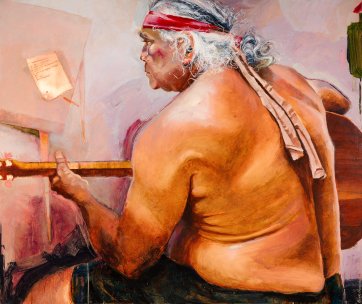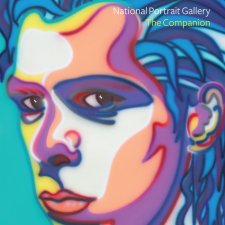Acclaimed singer songwriter and activist Kevin Daniel Carmody (Kev Carmody) is a Bundjalung/Lama Lama man born in Cairns in 1946. Growing up on a cattle station on the Darling Downs where his parents worked as drovers, Carmody learnt to ride a horse at four years old. Aged ten, he and his brother were taken from their parents under the assimilation policy as part of the Stolen Generations and sent to a boarding school in Toowoomba. It was after school that Carmody learnt classical guitar, including composition and theory, then enrolling in university at the age of 33 and completing a Bachelor of Arts. Carmody's first album, Pillars of Society (1988), was described as 'arguably the best protest album ever made in Australia'. Another four albums followed, among them Bloodlines (1993), which included Carmody's own rendition of the land rights anthem, 'From Little Things Big Things Grow', which he co-wrote with Paul Kelly and which was added to the National Film and Sound Archive's Sounds of Australia registry in 2010. The song tells the story of the Gurindji community’s Wave Hill Station Walk-Off in 1966 that created history and led to Prime Minister Gough Whitlam handing their land back symbolically. Carmody has received numerous accolades: At the 2005 Deadlys, he received the Jimmy Little Award for his lifetime contribution to music; he was awarded an honorary doctorate from the University of Southern Queensland in 2008, in 2009 he was inducted into the ARIA Hall of Fame, in 2019 he received that J.C.Williamson Award (part of the Helpmann Awards) outstanding contribution to the live entertainment and performing Arts Industry. In 2022 a new student accommodation building, Kev Carmody House, was opened at the University of Queensland; he received an Honorary Doctorate from the University of Queensland in December 2022, the same month and year he was awarded an Honorary Doctor of Letters from the Australian National University.
Multidisciplinary Creative Researcher, Brenda L. Croft (born 1964, Boorloo/Perth, WA) is from the Gurindji/Malngin/Mudburra Peoples from the Victoria River region in the Northern Territory, and Anglo-Australian/German/Irish/Chinese/Scottish heritage. One of Australia’s most important contemporary artists, her portrait of Kev Carmody is part of an ongoing project to represent and honour important First Nations people begun in the early 1980s. Here the representation begins with the creation of a tintype – a nineteenth century technique for making photographs in which an image appears on thin piece of metal. Croft’s final portrait sees the original tintype enlarged through a digital process in which each sitter is celebrated in a larger-than-life head study. For Croft, size and technique are conceptual, political strategies, in which she and the sitter claim space within a photographic history that has often either marginalised and exploited First Nations sitters or ignored them. Croft has described her portraits as a way of ‘addressing the ongoing invisibility of First Nations People’.
Purchased 2023
© Brenda L Croft/Copyright Agency, 2024
The National Portrait Gallery respects the artistic and intellectual property rights of others. Works of art from the collection are reproduced as per the
Australian Copyright Act 1968 (Cth). The use of images of works from the collection may be restricted under the Act. Requests for a reproduction of a work of art can be made through a
Reproduction request. For further information please contact
NPG Copyright.




















